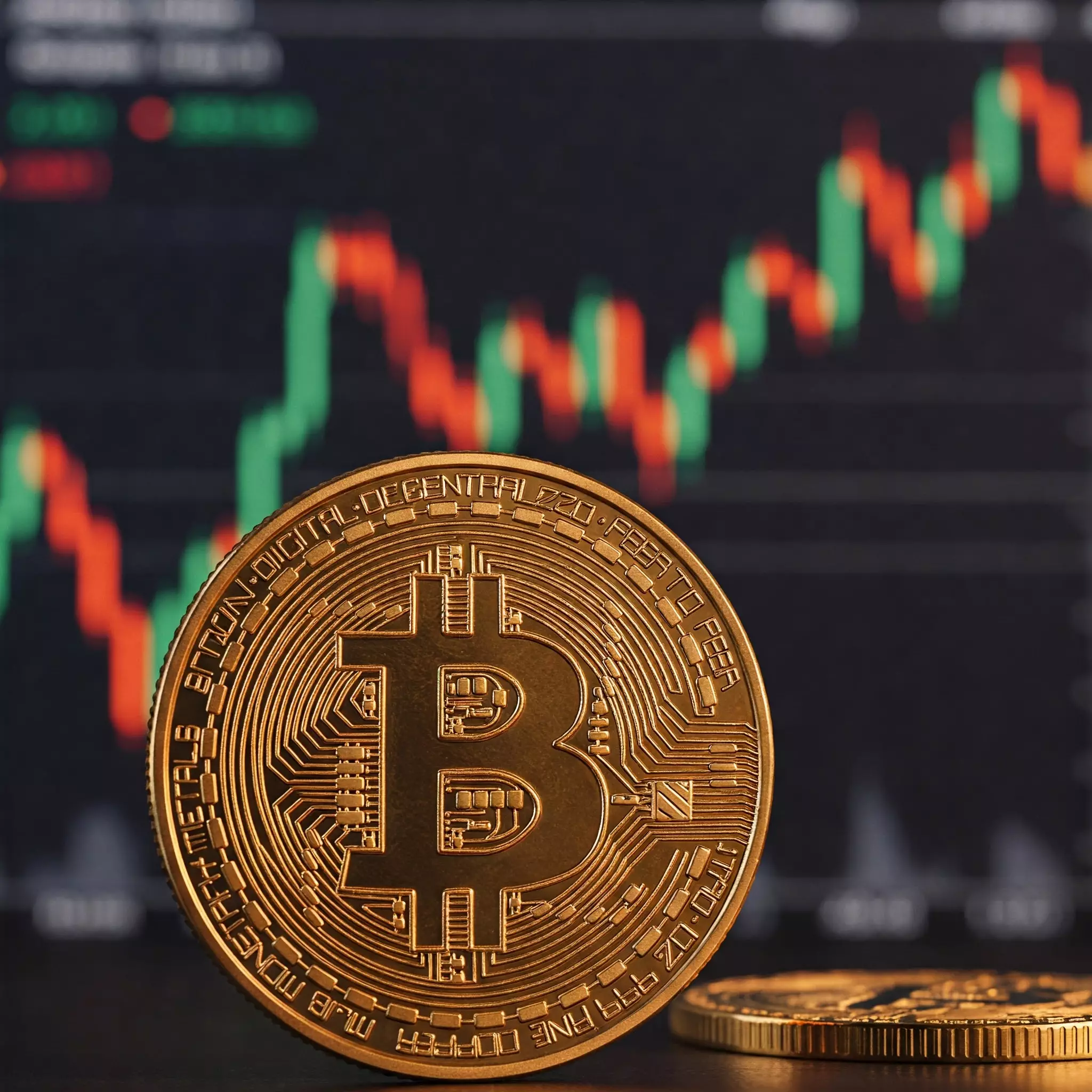The recent volatility in the cryptocurrency landscape has left many investors in a state of confusion, particularly as Bitcoin’s price surged back to $80,000 after experiencing a considerable dip. This alarming fluctuation, primarily triggered by economic concerns surrounding tariffs introduced by former U.S. President Donald Trump, reveals the precarious nature of digital currencies like Bitcoin. Alarm bells are ringing as a wave of panic selling cascaded through the market, indicating that the confidence many investors held in the cryptocurrency sector can falter dramatically based on macroeconomic factors rather than inherent structural issues within the digital currency itself.
With Bitcoin’s market capitalization hovering around $1.5 trillion, it stands as a beacon—or perhaps a mirage—in a desert of uncertainty for investors. The significant decline in price sets a stark reminder: these digital assets, once considered an alternative haven from traditional finance, can swiftly become victims of external economic pressures. It emphasizes the paradox of Bitcoin being both a hedge and a speculative asset, displaying traits of both security and vulnerability.
The Resilience of Bitcoin Dominance
Despite the setbacks, Bitcoin’s dominance has asserted itself with a notable increase crossing the 60% mark of the overall cryptocurrency market. Such dominance signals a potential flight to safety, where investors revert to established digital assets during turbulent times. However, the very nature of Bitcoin’s rise amidst the backdrop of broader market instability is concerning. The reliance on Bitcoin as a safety net illustrates that while investors may distrust traditional markets, they might not possess complete faith in the cryptocurrency domain either. It conjures an image of a market where investor sentiment is volatile and heavily swayed by external anxieties rather than the strength of the asset itself.
That being said, the dominance of Bitcoin could also serve as a smokescreen for systemic issues in the cryptocurrency market. Altcoins have suffered greater losses as evidenced by market performance, which begs the question: has Bitcoin truly become the stalwart it aims to be, or is it merely the least shaky boat on a stormy sea?
Futures Market Insights: A Risky Game
The current state of Bitcoin futures reflects a cautious market. According to data from Glassnode, futures open interest has recently fallen to $34.5 billion, with a notable decline from previous months. A decline from $30 billion to $27 billion in cash-margined open interest indicates a flight to safety—investors are reallocating resources in response to bearish momentum. This should invoke serious introspection among traders about the sustainability of the momentum that propelled Bitcoin so high in the first place.
Moreover, the dynamics of the liquidations in the past 24 hours paint an intriguing picture. The modest liquidation figure of $58 million amidst a 10% price drop suggests that, unlike previous months that witnessed more explosive liquidations, traders are not nearly as over-leveraged. While this could interpret a healthier market stance, it is equally possible that it indicates hesitance among traders—an unwillingness to risk too much capital in the face of ongoing economic anxiety.
Institutional Movement Amidst Market Chaos
Interestingly, reports suggest a surge in institutional interest, with 76 new institutions accumulating over 1,000 BTC in the last two months—a 4.5% increase in large holders residing within the ecosystem. This institutional adoption stands as a counter-narrative to the fears gripping retail traders who seem to be navigating a treacherous landscape with caution.
However, the influx of institutional investment is worth scrutinizing. Are these institutions genuinely prepared to weather the storm, or are they also betting on the winds changing course at any moment? The emergence of institutional players could bring more stability in the long run, but it also underscores a shifting dynamic where the fate of Bitcoin is increasingly tied to the sentiments and decisions of larger entities.
In this era of cryptocurrency trading, we must grapple with the uncomfortable recognition that our digital assets exist within a fragile construct—one that is as susceptible to the whims of government policy and international economic sentiment as any traditional investment. The resilience of Bitcoin might inspire hope, but it’s crucial to remain vigilant and discerning, as the tides of fortune can shift in an instant. As investors, we must ask ourselves if we are truly prepared for the ride ahead or simply clinging to the promise of a better tomorrow with no assurance.















Leave a Reply